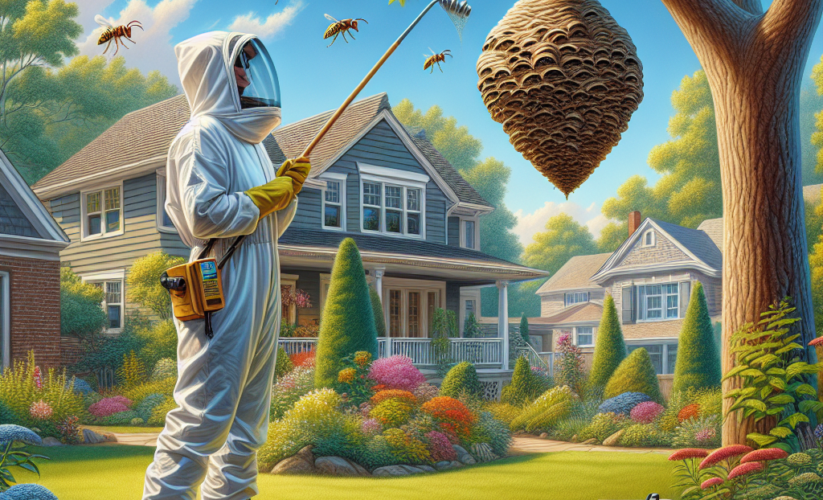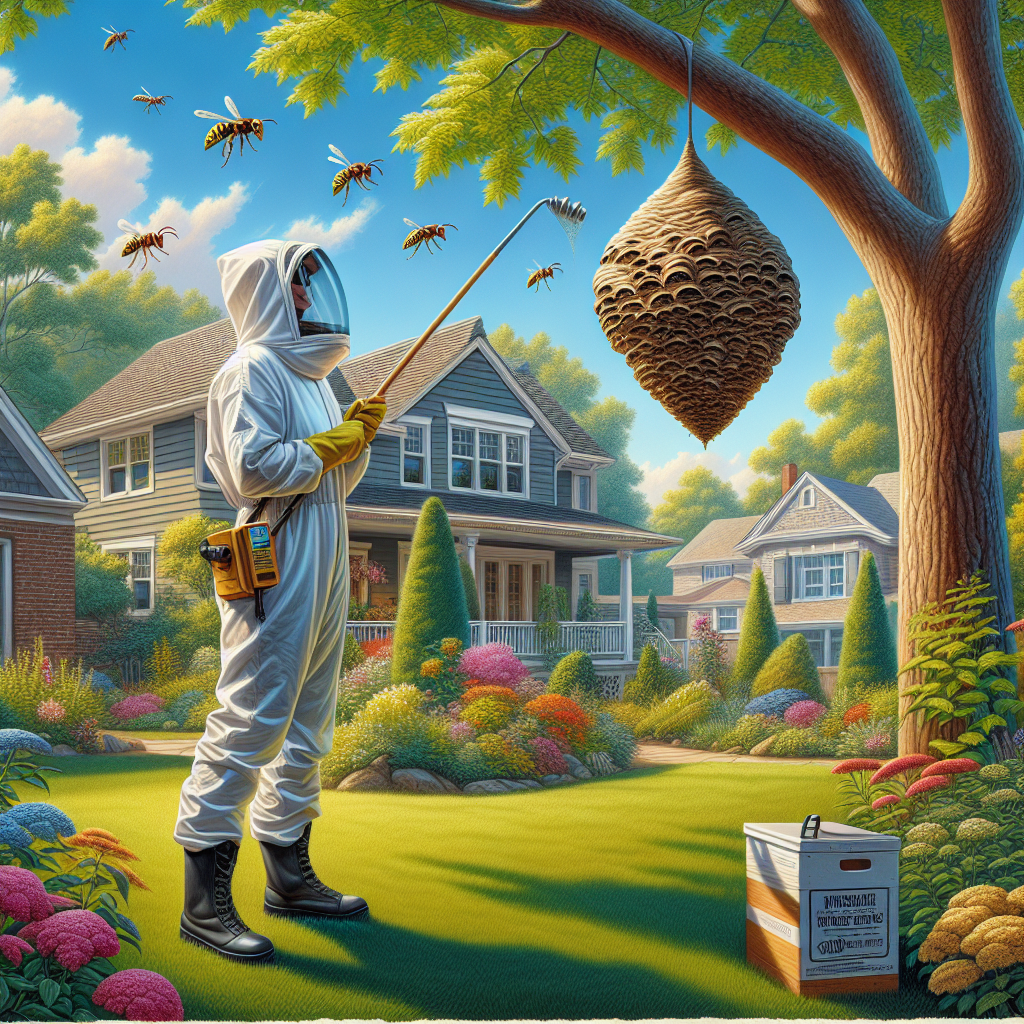
10 Proven Tips to Close Your Hornissennest Effectively
Understanding Hornissennest: Nature’s Intriguing Hornets’ Nest
The Formation of Hornissennest
The **hornissennest**, or hornet’s nest, is an incredible architectural marvel created by social wasps. These structures are typically made from a blend of wood fibers and saliva, which the hornets chew to form a paper-like material. The intricate construction process begins as female hornets seek out suitable locations, often under eaves, in trees, or other sheltered places. As the nest develops, it can grow significantly, sometimes reaching the size of a basketball. These nests can house thousands of hornets, depending on the species and environmental conditions. Understanding the formation of a hornissennest helps in appreciating the complexity of wasp colonies and their communal living.
Components of a Hornissennest
A typical hornissennest is a layered structure, with each layer serving a specific function. The outer layer serves as protection from environment and predators, while the inner structure contains individual cells where larvae are raised. Each cell is carefully built to accommodate one hornet egg, which will eventually hatch into a larva. The **hornets** continuously work to repair and expand the nest throughout the season. This cooperative behavior is crucial for the survival of the colony, demonstrating the remarkable social structure inherent in these species.
Lifecycle Within the Hornissennest
The lifecycle of hornets within a hornissennest is fascinating. Female hornets usually begin the nest in the spring, establishing the colony. As the colony grows, more worker hornets are born, facilitating the construction of the nest and searching for food. The workers gather protein-rich food for the larvae, which in turn helps the colony thrive. By late summer, nests are at their peak size, filled with numerous adult hornets and their larvae, before the cycle begins anew in the following spring. It is essential to note that during fall, when temperatures drop, only fertilized female hornets are likely to survive, leading to the dissipation of the rest of the colony.
Ecological Role of Hornissennest
Hornets, while often feared, play a vital role in the ecosystem. The **hornissennest** serves as a home to these predators, which help control pest populations. As they hunt other insects, including pests that can damage crops, hornets contribute significantly to agricultural health. Understanding their ecological role can help mitigate negative perceptions about these insects and appreciate their contribution to biodiversity.
Benefits of Hornets in Agriculture
Farmers may find a hornissennest nearby beneficial. Hornets primarily feed on other insects, which often include those irritating to crops. By naturally controlling the pest population, hornets can reduce the necessity for chemical pesticides. For instance, a study found that the presence of hornets decreased caterpillar populations in cornfields. Therefore, allowing hornets to thrive nearby can result in healthier crops and a more sustainable farming practice.
Predator and Prey Dynamics
The predator-prey relationship is vital within the ecosystem, and the hornissennest plays a significant part in this dynamic. Hornets are not only predators; they also fall prey to larger animals and birds. By understanding these relationships, we can learn more about the balance required to maintain ecological health. Additionally, educating the public about the role of hornets and their nests can reduce unnecessary exterminations and foster a more harmonious coexistence with nature.
Human Interaction with Hornissennest
Human encounters with hornissennests can lead to discomfort or fears, often prompting actions to remove them. However, education on hornets can significantly alter people’s perceptions and reactions. It is important to know that hornets generally do not pose a threat unless their nest is disturbed. Understanding how to interact safely can prevent unpleasant encounters and reduce the need for extermination.
Safe Nest Removal Techniques
If a hornissennest poses a legitimate threat, professional removal is advisable. Attempting to remove or destroy a nest without proper knowledge can result in aggressive hornet behavior, leading to stings. It is critical to wear protective gear and choose an appropriate time for removal, typically at night when the hornets are less active. Alternatively, individuals can contact pest control experts who understand the necessary precautions. Engaging professionals ensures the nest is removed safely, minimizing the risk of swarming hornets.
Understanding Hornet Behavior
Education on hornet behavior can facilitate safer interactions with these insects. Hornets are generally non-aggressive and will only defend their nest when threatened. Learning to recognize hornet flight patterns and their nesting habits can help individuals avoid unintentional disturbances, ensuring both human safety and the preservation of beneficial hornets. Providing resources on hornet behavior can alleviate public fears while promoting coexistence with this remarkable species.
Conservation and Future of Hornissennest
Understanding the importance of hornissennest and its inhabitants can lead to better conservation efforts. As humans encroach on natural habitats, many insect species, including hornets, face declining populations. Protecting hornets and their nests is crucial for maintaining biodiversity and ensuring the health of ecosystems. Conservation initiatives often focus on educating communities about the value of hornets, promoting harmony between humans and nature.
Community Awareness Programs
Community outreach and education programs can increase awareness about the ecological role of hornets. Workshops and informational sessions can help dispel myths regarding hornets, demonstrating their benefits to agriculture and pest control. Similarly, these programs can equip individuals with knowledge about safe interactions and removal techniques, fostering responsible attitudes towards local wildlife. Building community engagement can ensure that hornets are respected creatures within their ecosystems.
The Future of Hornets in an Urbanizing World
As urbanization continues, the balance between development and conservation becomes increasingly crucial. Understanding the role of hornissennest and the creatures within them can encourage urban planners and developers to create habitats that sustain local wildlife, including hornets. By incorporating green spaces and nesting opportunities into urban design, cities can facilitate the survival of hornets and other beneficial insects. This mutual respect supports biodiversity and enhances community health.
Key Takeaways
- Hornissennest is a remarkable architectural structure built by social hornets, serving crucial ecological roles.
- Understanding hornet behavior and benefits can foster coexistence while promoting agricultural health.
- Community awareness and educational programs can alleviate fears and improve interactions with hornets.
- Conservation efforts are necessary to protect hornets and their ecosystems in an urbanizing world.
FAQ
1. What is the best way to handle a hornissennest if I find one in my yard?
If you discover a hornissennest in your yard, maintain a safe distance and avoid disturbing it. If removal is necessary, contact a pest control professional experienced in humane nest removal to ensure safety for both you and the hornets.
2. Are hornets aggressive creatures?
Hornets are not typically aggressive unless they feel threatened. Understanding their behavior and nesting habits can help prevent encounters that might lead to stings.
3. What are the benefits of having hornets in my garden?
Having hornets in your garden can serve as a natural pest control method. They prey on various insects that may harm your plants, reducing the need for chemical pesticides and promoting a healthier garden.
4. How can I safely observe hornets without disturbing them?
To safely observe hornets, maintain a respectful distance and avoid approaching their nest. Use binoculars to watch their behavior from afar, ensuring you do not provoke them.
5. Why is it essential to conserve hornets and their habitats?
Conserving hornets and their habitats is crucial for maintaining ecological balance. Hornets contribute to pest control and biodiversity, making their protection vital for a healthy ecosystem.
